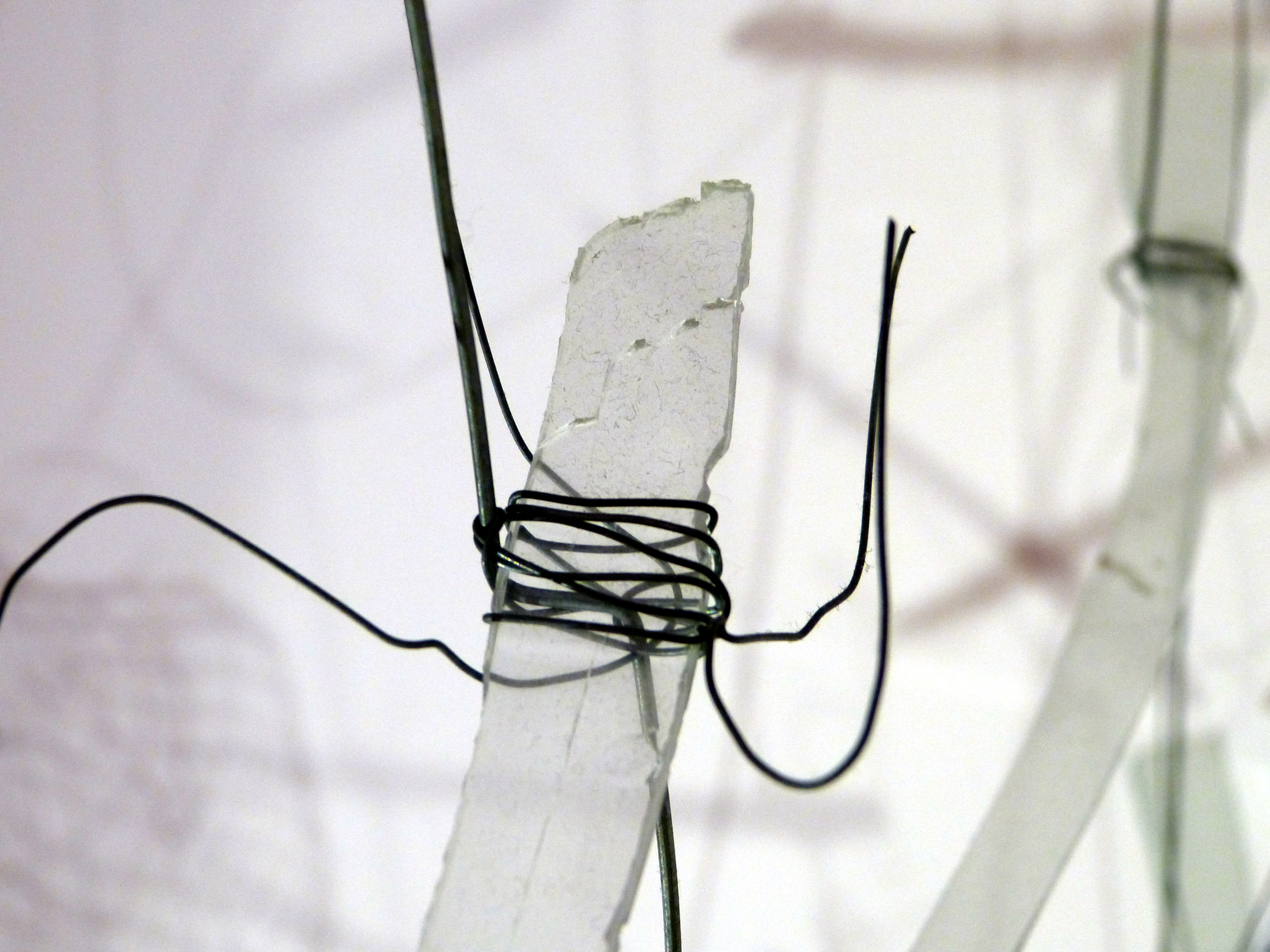S/T (2000)
A theme that defines the work of Albert Macaya (Reus, 1961) is the search for identity in the modern world. The author works extensively on the idea of constructing knowledge and identity.
His artistic career, after a period in which he painted, led him to sculpture, given that it is a field “that offers more possibilities for relating one’s self with space, of making the impasse towards the installation: making the visitor go through the work, making them feel involved", as he puts it.
 His sculptural work is in the field of installations and his constant is non-perdurability. The artist constructs his works from wires, glass, branches, leaves and paper, among other materials. In the process of elaboration, one can observe the union between different elements which, like man, establish a way of understanding and experiencing the world.
His sculptural work is in the field of installations and his constant is non-perdurability. The artist constructs his works from wires, glass, branches, leaves and paper, among other materials. In the process of elaboration, one can observe the union between different elements which, like man, establish a way of understanding and experiencing the world.
 In this work, S/T (2000), Macaya plays with the tenue and fragile corporeity and the luminous shadow the work itself generates; he also proposes a new vision of empty and occupied spaces. Standing before the work, one has the sensation of having to hold one's breath whilst following with one’s eyes all the joins made by the wires. By observing the balance, serenity and lightness of the ensemble, we realise the fragility of the work, and at the same time its aggressiveness. Two anonymous and asexual, incomplete and constantly growing silhouettes are surrounded by broken glass with a dual function: to isolate the figures and symbolise the external agents that harm individuals, yet are necessary for personal growth.
In this work, S/T (2000), Macaya plays with the tenue and fragile corporeity and the luminous shadow the work itself generates; he also proposes a new vision of empty and occupied spaces. Standing before the work, one has the sensation of having to hold one's breath whilst following with one’s eyes all the joins made by the wires. By observing the balance, serenity and lightness of the ensemble, we realise the fragility of the work, and at the same time its aggressiveness. Two anonymous and asexual, incomplete and constantly growing silhouettes are surrounded by broken glass with a dual function: to isolate the figures and symbolise the external agents that harm individuals, yet are necessary for personal growth.
 This reference to organic growth, to the notion of developing through successive bifurcations and connections, like the wires disseminated through the space, also refer to the personal growth we experience through our choices in life and relating ideas, intuitions, facts and encounters.
This reference to organic growth, to the notion of developing through successive bifurcations and connections, like the wires disseminated through the space, also refer to the personal growth we experience through our choices in life and relating ideas, intuitions, facts and encounters.

